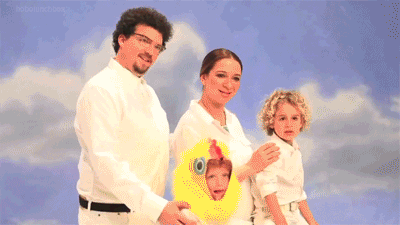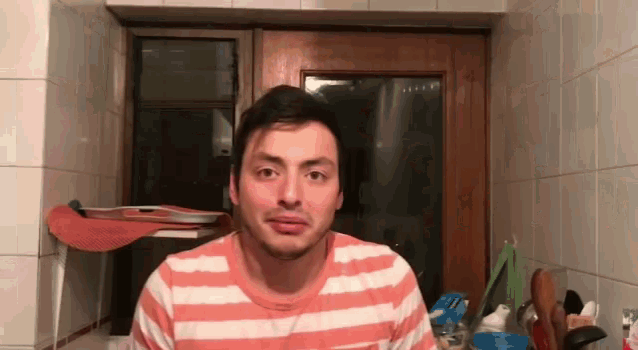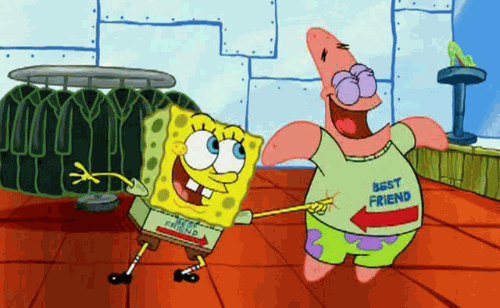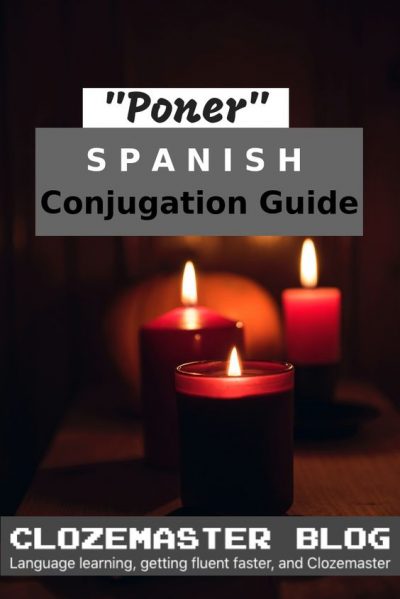Are you tired of monotonous conjugation tables and are looking for a one-stop shop to MASTER the Spanish verb poner? Well, you’ve come to the right place!
Welcome to the University of Poner! Today we are going to certify you in all meanings and tenses of the Spanish verb poner, break down the ponerse reflexive conjugation, and include practical real-world experience to get you speaking ASAP!
To present the amazing verb poner, we have laid out your curriculum in the following tenses:
BEGINNER (Undergrad)
- I put/place (yo pongo)
- I put (yo puse)
- I will put (yo pondré)
- I used to put (yo ponía)
INTERMEDIATE (Masters)
- If I put, I would… (si pusiera, pondría…)
- I am putting (yo estoy poniendo)
ADVANCED (PhD)
- If I had put, I would have… (si hubiera puesto, habría puesto…)
Our University has created a powerful outline for you to learn the most common conjugations of the Spanish verb poner in English. We will start with 10 different uses of poner, then get into conjugations with examples you can ACTUALLY use!
Let’s hit the books!
10 Different Uses of the Spanish Verb Poner in English
In this section, we will talk about the different uses of the Spanish verb poner, including the ponerse reflexive, so that all of the conjugations and examples below will make perfect sense!
PONER
1.To place/put something somewhere
Siempre pongo la llave encima de la mesa.
I always put the key on top of the table.
2. To invest/contribute money/throw down
Si ponemos $10,000 cada uno, compramos la casa ya.
If we all put down $10,000 each, we can buy the house now.

3. To show/display
Siempre ponen tantos comerciales en la tele.
They always show so many commercials on TV.
4. To set up
Hijo, tienes que poner la mesa para la cena.
Son, you have to set the table for dinner.
PONERSE (REFLEXIVE)
The reflexive version of poner is used much more often. It can refer to a literal placing (from putting clothes on yourself to putting yourself in a physical place) or it can refer to an emotional state (putting yourself in a certain mood or putting you on/off).
5. To put on clothing
No tengo nada que ponerme!
I have nothing to wear!

Me pongo el vestido azul?
Should I wear the blue dress?
6. Change or affect someone’s mood/attitude
Me pone nerviosa cuando mi novio sale con sus amigos.
It makes me nervous when my boyfriend goes out with his friends.
Me pone mal cuando dices que no me quieres más.
It depresses me when you tell me you don’t love me anymore.

7. To become
Se puso triste cuando supo que cancelaron su clase.
She got/became sad when she realized that they cancelled her class.
Se puso tan feliz cuando me vio en el aeropuerto!
She got/became so happy when she saw me at the airport!
8. To move/place yourself physically
Ponte al lado de tu hermano para la foto ya!
Get next to your brother for the picture now!

EXPRESSIONS WITH PONER (THAT DON’T TRANSLATE)
9. ¡Ponte las pilas!
Ponerse las pilas literally means put batteries in yourself. It really means “to get your sh** together”, “to get cracking.”
Mamá, tengo tanto trabajo que hacer!
¡Ponte las pilas pues!
Mom, I have so much work to do!
Well, get to work then!

10. ¡Me puso los cuernos!
The literal sense of poner los cuernos is “to put the horns”. It really means “to cheat on someone”.
Mi novio me puso los cuernos!
No me lo puedo creer!
My boyfriend cheated on me!
I can’t believe it!
Spanish Conjugation of Poner: Beginner Level
In Beginner poner, we will start with the easy tenses that you use every day (I put/place, I put, I will put, I used to put…). Then we will give example sentences using one conjugated verb.
The Present, Preterite, Future and Imperfect Poner
*Irregular in green
| Subject | Present | Preterite | Future | Imperfect |
| yo | pongo | puse | pondré | ponía |
| tú | pones | pusiste | pondrás | ponías |
| él, ella, Usted | pone | puso | pondrá | ponía |
| nosotros | ponemos | pusimos | pondremos | poníamos |
| vosotros | ponéis | pusisteis | pondréis | poníais |
| ellos, ellas, ustedes | ponen | pusieron | pondrán | ponían |
OJO! Poner has a couple irregularities which need to be memorized:
- In the first person present, which is important because it is used again in the presenting subjunctive (yo ponga);
- In the preterite, which is important because it used again in the imperfect subjunctive (yo pusiera);
- In the future, which is important because the stem change is used again in the conditional (yo pondría) (Click here for a refresher on Future Tense and stem changes!)
The above four tenses cover the most basic conversation skills. Again, they only require the use of one conjugated verb per sentence to create a full, competent phrase (I put/place, I put, I’ll put, and I used to put…).
Example Sentences Using Spanish Verb Poner in Present, Preterite, Future and Imperfect Tenses
Let’s put the lame conjugation table into practice. Check out these example sentences with the verb poner below:
- A veces me pongo un vestido para el trabajo. (Sometimes I wear a dress to work.)
- Se puso tan borracho ayer! (He got so drunk yesterday!)
- Todos pondremos $10. (We will all chip in/put in $10.)
- Cuando era niña, siempre ponía la mesa. (When I was a girl, I always set the table.)
Spanish Conjugation of Poner: Intermediate Level
In Intermediate poner, we will look at some of the more underground conjugations to create sentences with two verb conjugations that enable us to talk about hypothetical situations.
The Imperfect Subjunctive Poner and Conditional Poner
*Irregular in green
| Subject | Imperfect Subjunctive (If I) put/placed… |
Conditional (I) would put/place… |
| yo | pusiera | pondría |
| tú | pusieras | pondrías |
| él, ella, Usted | pusiera | pondría |
| nosotros | pusiéramos | pondríamos |
| vosotros | pusierais | pondríais |
| ellos, ellas, ustedes | pusieran | pondrían |
In Intermediate poner, we move up from one conjugated verb per sentence to two conjugated verbs. As mentioned in our spectacular Spanish Guide to Dar, Imperfect Subjunctive & Conditional are like two peas in a grammar pod, BFF4E&E.

OR

The best example of this is the following: What would you do with a million bucks? In a hypothetical situation, you might say:
“If I had a million dollars, I would buy a yacht.”
In English, the imperfect subjunctive is had, and the conditional is would buy, as seen above. For the verb poner, the imperfect subjunctive is put/placed (pusiera), and the conditional is would put/place (pondría). Now, let’s get to dreaming with some hypotheticals!
Example Sentences Using Spanish Verb Poner in Imperfect Subjunctive and Conditional Tenses
The following sentences show how the BFF verbs from above form hypothetical sentences. The if of the hypothetical is highlighted in red:
- Me pondría tan feliz si (ella) pusiera sus cosas en los lugares adecuados. (It would make me so happy if she put her things in the right places.)
- Si te pusieras las pilas de vez en cuando, tu madre se pondría de buen humor. (If you got your act together every once in a while, your mother would be in a good mood.)
- Si pusieran menos noticias malas en la tele, no me pondría tan nerviosa. (If they showed less bad news on the TV, I wouldn’t get so nervous.)
Key Takeaway!The imperfect subjunctive and conditional ALWAYS go together, no matter the verb! Remember this powerful mnemonic device: Imperfect Love is Subjective and Conditional! |
The Continuous Present Poner
The continuous present is equal to “I am putting” in English. Here, to be or estar is the auxiliary verb. To form the continuous present, you simply conjugate the verb estar and add “poniendo”, which is a fancy word called a gerund (words ending in -ing in English).
| Subject | Continuous Present |
| yo | estoy poniendo |
| tú | estás poniendo |
| él, ella, Usted | está poniendo |
| nosotros | estamos poniendo |
| vosotros | estáis poniendo |
| ellos, ellas, ustedes | están poniendo |
We consider this intermediate because it also involves the composition of two verbs: estar + poner.
You can also conjugate the verb estar in many ways to create I was putting (estaba poniendo) or I will be putting (estaré poniendo), but in all the cases it always gives the idea that there is action in progress.
Let’s get inwto some sample sentences to see how the continuous present is used!
Example Sentences Using Spanish Verb Poner in Continuous Present Tense
The following sentences show how the continuous present puts the verb poner in action:
- ¡Paren de jugar cerca de la piscina! Me están poniendo nerviosa! (Stop playing close to the pool! You’re making me nervous!)
- Estoy ocupado, papá! Estoy poniendo la mesa! (I am busy, dad! I am setting the table!)
- ¡Que alegría verlos a ustedes! Tuve un día horrible pero ahora me están poniendo de buen humor! (It’s so great to see you guys! I had a horrible day but now you are putting me in a good mood!)

Get the picture?!Continuous present is all about an action that is occurring over a period of time, and is almost always equal to “I am putting/doing/saying/walking/etc…” |
Spanish Conjugation of Poner: Advanced Level
In Advanced poner, we cover more advanced conjugations: past perfect subjunctive and perfect conditional. We will break down their meanings and example sentences of these fancy verbs in action!
The Perfects: Past Perfect Subjunctive and Perfect Conditional
*Irregular in green
| Subject | Past Perfect Subjunctive (If I) had put/placed… |
Perfect Conditional (I) would had put… |
| yo | hubiera puesto | habría puesto |
| tù | hubieras puesto | habrías puesto |
| él, ella, Usted | hubiera puesto | habría puesto |
| nosotros | hubiéramos puesto | habríamos puesto |
| vosotros | hubierais puesto | habríais puesto |
| ellos, ellas, ustedes | hubieran puesto | habrían puesto |
In Advanced Spanish, we move up from two verbs per sentence to FOUR!

Let’s dive into the what if’s. These are the shoulda coulda wouldas of Spanish, as seen in the Guide to Dar! It’s the perfect combination of perfects:
past perfect subjunctive + perfect conditional
In these tenses, we use the verb haber (to have) as an auxiliary verb, and the verb poner in its past participle -puesto (click here for Spanish past participles and lazy grammar hacks).
We LOVE using perfect tenses because we just need to remember how to conjugate haber. Here is an example with the verb poner, but any verb can follow this pattern:
“Si hubiera puesto, hubiera dicho, si hubiera hecho…”
(If I had put, if I had said, if I had done…)
“Yo habría puesto, habría dicho, habría hecho…”
(I would have put, would have said, I would have done…)
Example Sentences Using Poner in Past Perfect Subjunctive and Perfect Conditional Tenses
Take a look at these advanced examples with poner below!
- Si hubiera puesto $100, mi hermana también habría puesto $100. (If I had put down $100, my sister also would have put $100.)
- Si hubiera puesto la llave en la cocina como mi mamá me pidió, se habría puesto tan feliz. (If I had put the key in the kitchen like my mom asked me to, she would have gotten so happy.)
- Si me hubiera puesto el vestido rojo que le gustaba a él, tal vez no me habría puesto los cuernos! (If I had worn the red dress that he liked, maybe he wouldn’t have cheated on me!)
¡No Te Pongas Triste!
Don’t get sad that it’s over, be happy that it happened!
You’ve officially graduated from the University of Poner. Ponte feliz!
Your PhD covers 10 different uses of the verb poner and 7 different tenses, including:
- I put/place (yo pongo)
- I put (yo puse)
- I will put (yo pondré)
- I used to put/place (yo ponía)
- If I put, I would… (si yo pusiera, pondría)
- I am putting (estoy poniendo)
- If I had put, I would have… (si hubiera puesto, habría puesto)
However, before you get Senioritis, make sure to practice your poner skills with Clozemaster!
Click here to read our comprehensive guide to all Spanish tenses!
Challenge yourself with Clozemaster
Test your skills and see what you’ve learned from this article by playing a selection of sentences with various expressions employing the Spanish verb poner:
Sign up here to save your progress and start getting fluent with thousands of Spanish sentences at Clozemaster.
Clozemaster has been designed to help you learn the language in context by filling in the gaps in authentic sentences. With features such as Grammar Challenges, Cloze-Listening, and Cloze-Reading, the app will let you emphasize all the competencies necessary to become fluent in Spanish.
Take your Spanish to the next level. Click here to start practicing with real Spanish sentences!


